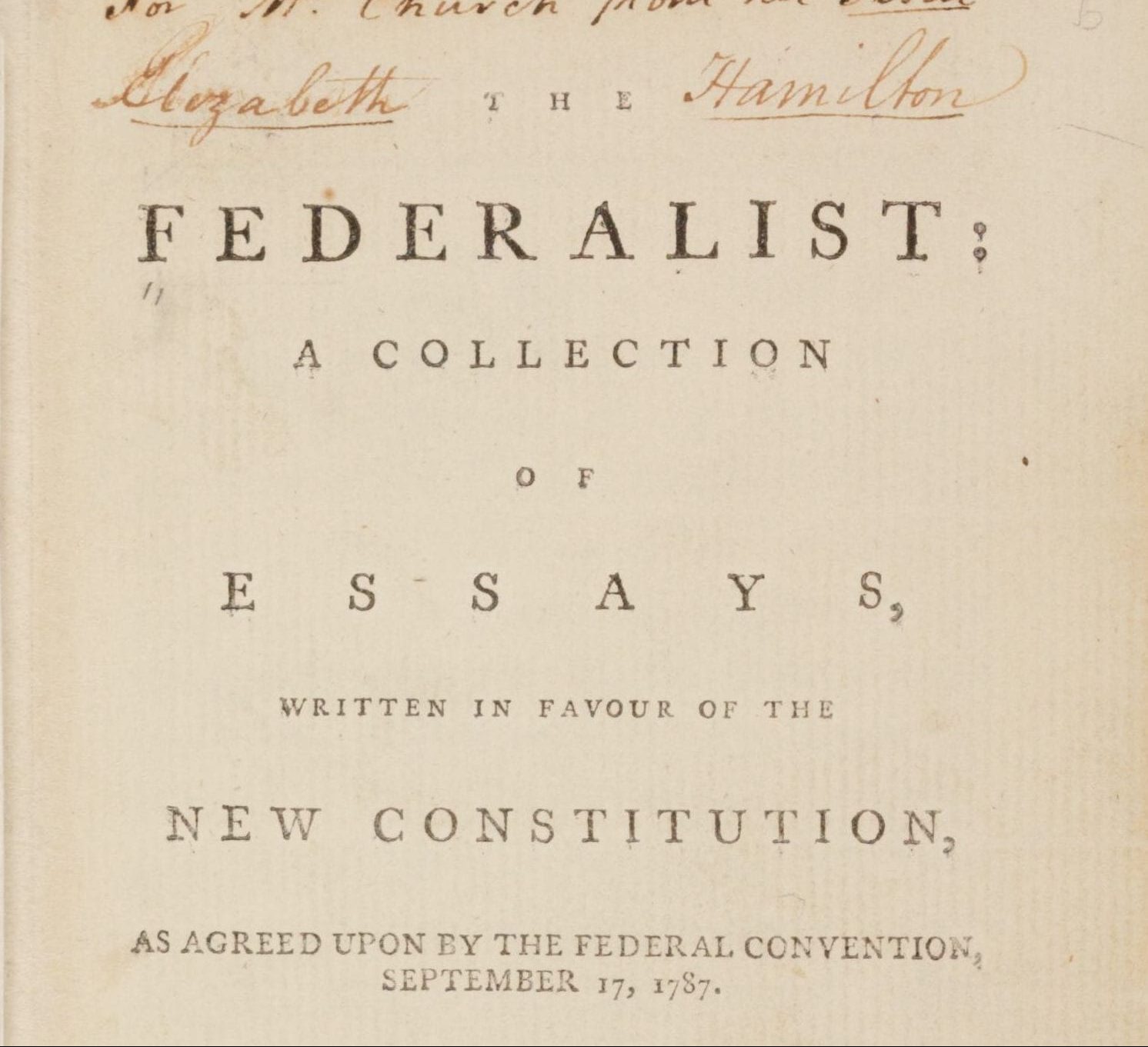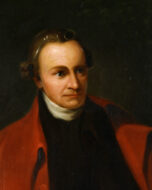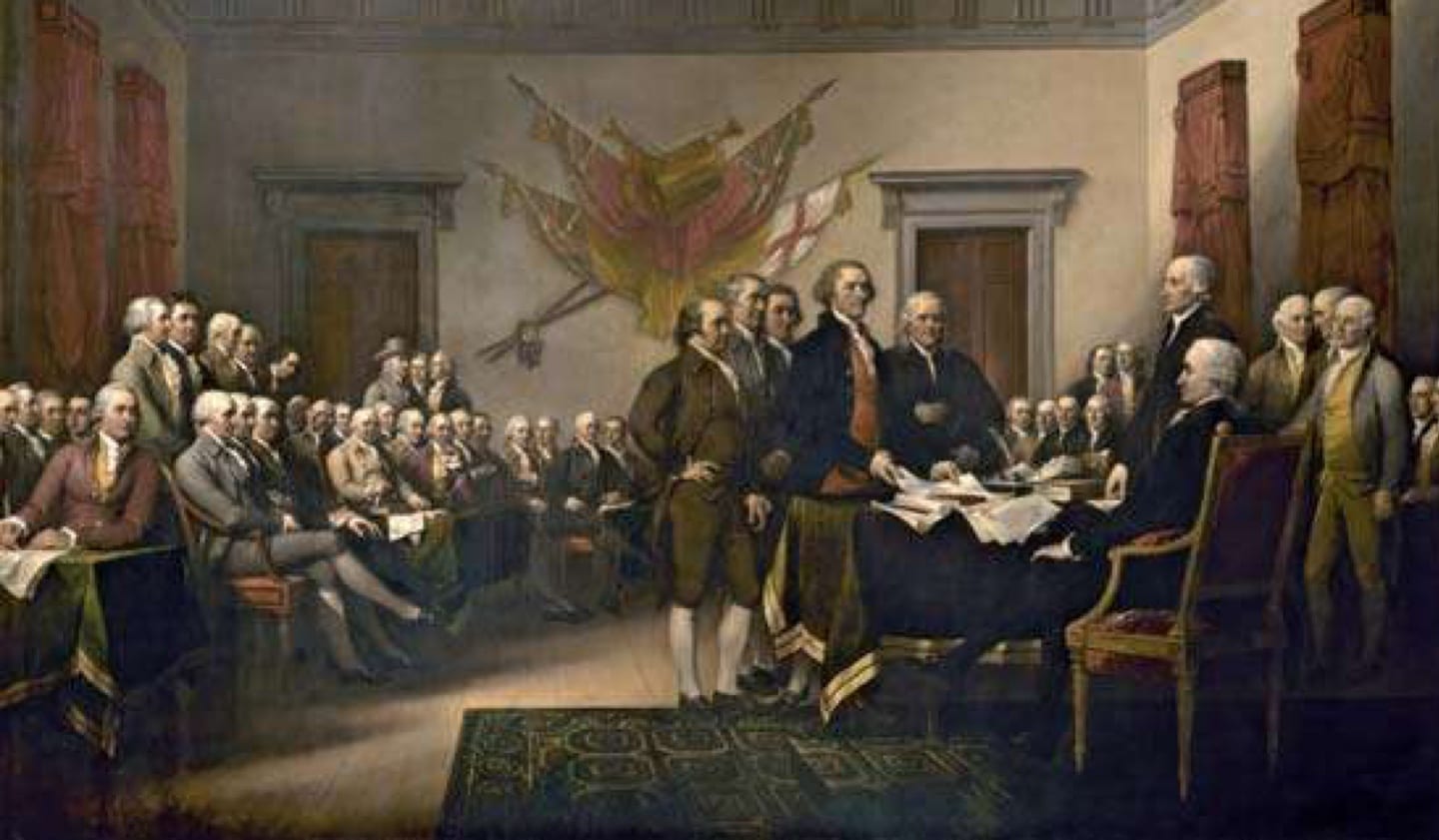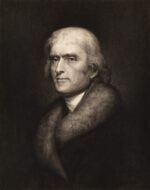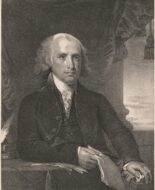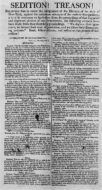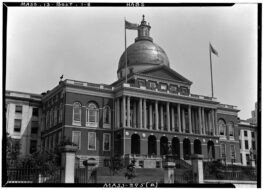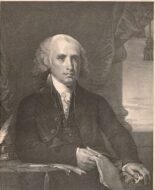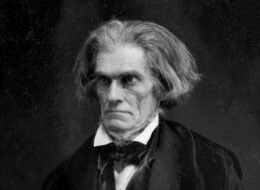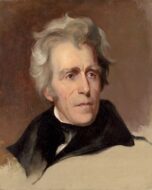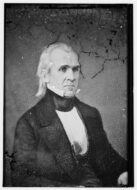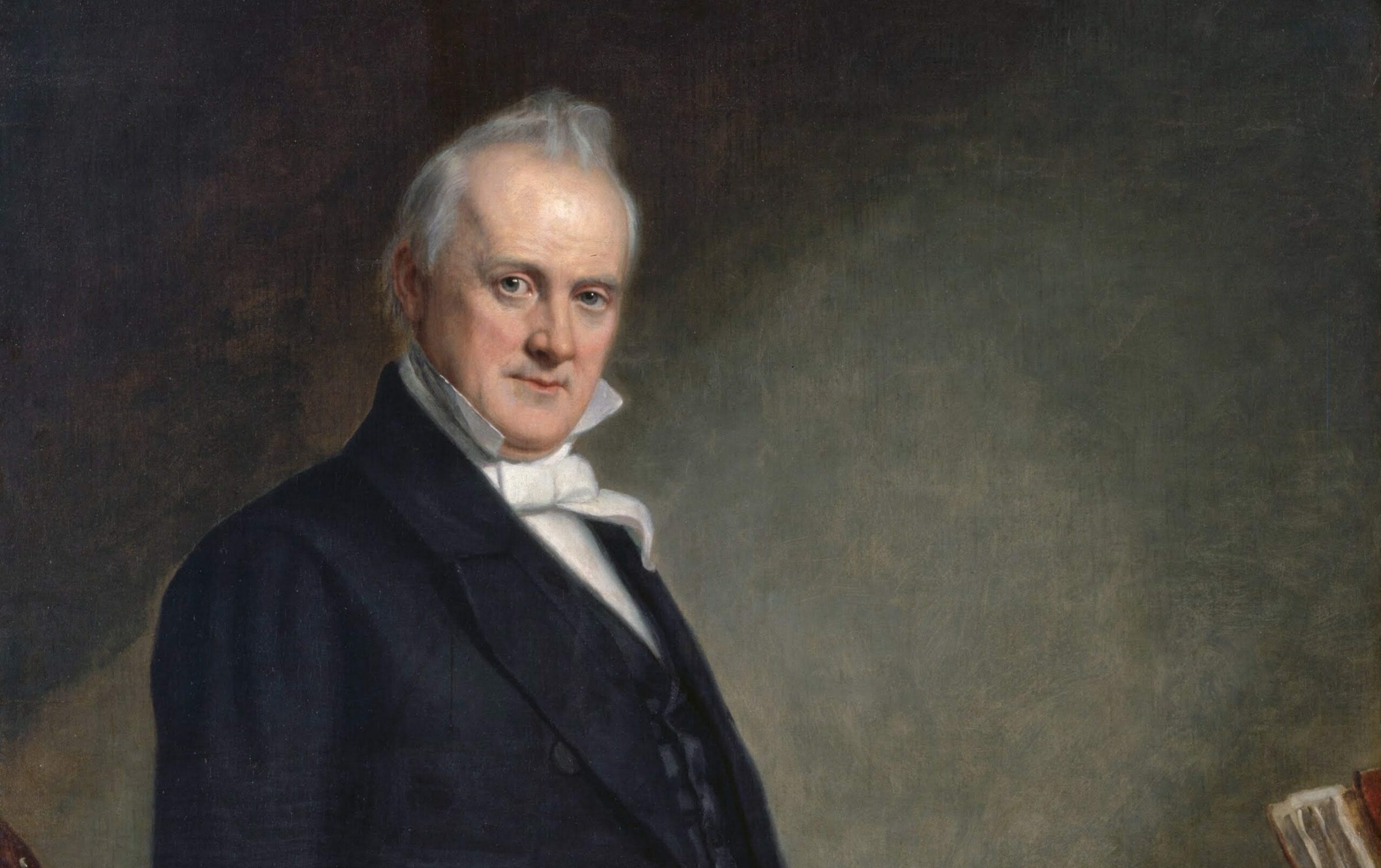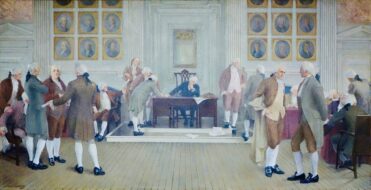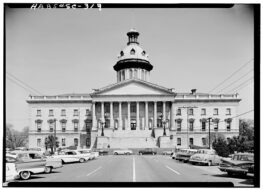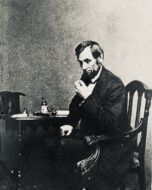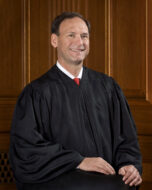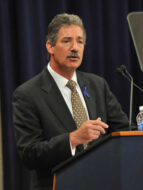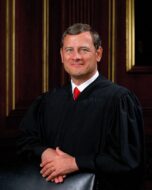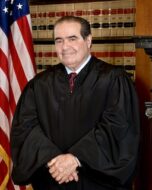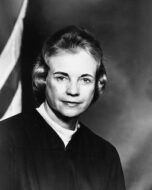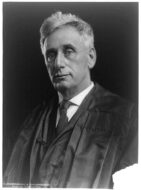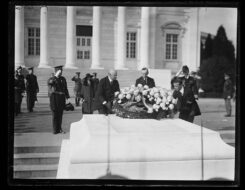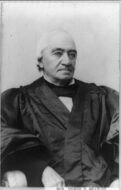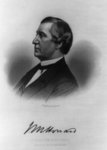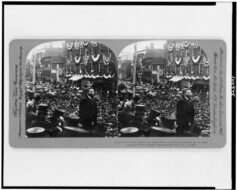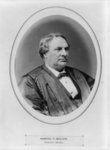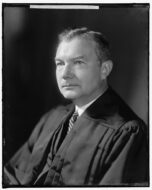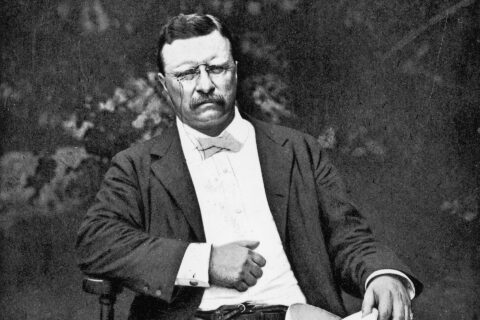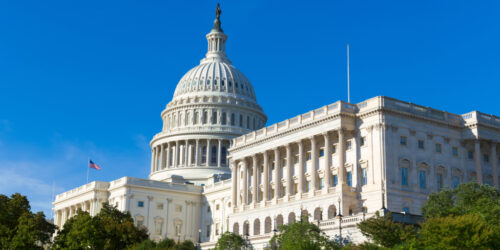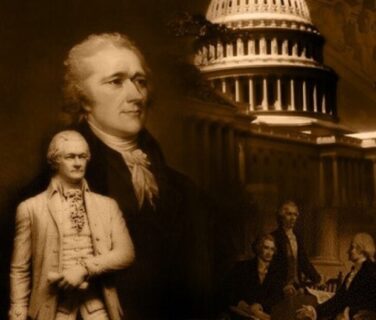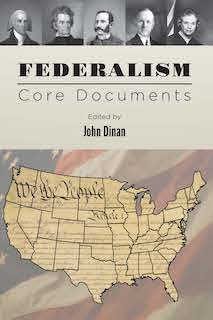
Federalism
The structure of the U.S. federal system that emerged from the federal constitutional convention of 1787 was the product of extensive deliberation about which institutional arrangements would promote effective governance and secure individual liberty. Some delegates sought to establish a federal government with complete authority to act “in all cases which require uniformity” and to empower Congress to veto state legislative acts (James Madison, Letter to George Washington, April 16, 1787). Other delegates preferred to boost federal power in more modest ways; they balked at authorizing Congress to veto state laws, levy and collect taxes, and regulate elections, because they feared this would lead to a consolidation of power in the federal government (The Address and Reasons of Dissent of the Minority of the Convention, of the State of Pennsylvania, to Their Constituents, December 12, 1787. Patrick Henry, Remarks at Virginia Ratifying Convention, June 5, 1788).
The Constitution did not go as far in strengthening federal authority as some delegates preferred, but it nevertheless increased federal power in ways that generated significant concern on the part of other delegates. Article I, section 8 makes clear that the federal government exercises enumerated rather than plenary powers, although the final clause in this section empowers Congress to make all laws that are “necessary and proper for carrying into execution” these and other powers. The understanding, set forth by James Madison in Federalist 45, was that the federal government’s powers were “few and defined,” whereas state government powers were “numerous and indefinite.” Madison explained: “The former will be exercised principally on external objects, as war, peace, negotiation, and foreign commerce; with which last the power of taxation will for the most part be connected. The powers reserved to the several states will extend to all the objects, which, in the ordinary course of affairs, concern the lives, liberties and properties of the people; and the internal order, improvement and prosperity of the state” (Publius (James Madison), Federalist 45, January 26, 1788)).
As for how the balance of power between the federal and state governments would be superintended, the convention rejected Madison’s repeated efforts to give Congress a veto over state laws (Federal Constitutional Convention, Debate on National Veto of State Laws, June 8, 1787). Instead, the Constitution declares in the supremacy clause (Article VI) that federal constitutional provisions and congressional acts passed in pursuance of the Constitution take precedence over contrary state constitutional provisions and laws. The expectation, expressed by several delegates during the convention debates and set out explicitly by Madison in Federalist 39, was that the U.S. Supreme Court would be responsible for adjudicating “controversies relating to the boundary between the two jurisdictions,” by invalidating state acts encroaching on federal power and barring enforcement of federal acts exceeding the legitimate bounds of federal authority (Publius (James Madison), Federalist 39, January 16, 1788)).
State Governments and Federalism
A leading controversy during the three quarters of a century following the Constitution’s ratification centered on the role of state officials in superintending these boundaries and determining when federal officials exceeded their authority. On various occasions, officials in the southern, New England, and midwestern states contended that Congress or the federal executive or judiciary had acted illegitimately and sought redress for these violations. State officials generally grounded these claims in a view of the Constitution as a compact among states and an understanding that states as parties to the compact could determine when the compact had been violated and remedy the violation. In response to the Alien and Sedition Acts of 1798, the Virginia and Kentucky legislatures issued resolutions declaring these acts to be unconstitutional and making a case for state interposition to bring about their repeal (Virginia General Assembly, Resolutions, December 21, 1798). Other state legislatures responded to the Virginia and Kentucky Resolutions by contending that determinations about the constitutionality of federal acts were entrusted to the federal judiciary and not state officials (Massachusetts Legislature, Response to the Virginia Resolutions, February 13, 1799). However, the Virginia General Assembly mounted a vigorous defense of state interposition in a report issued in 1800 (Virginia General Assembly, Report of 1800, January 7, 1800). A decade later, it was the turn of New England states to advance claims about the unconstitutionality of federal acts and the role of state governments in bringing about their repeal, this time in response to the Embargo Act of 1807 and various acts enforcing the embargo during Thomas Jefferson’s presidency (Massachusetts Legislature, Resolutions Regarding the Enforcement Act for the Embargo, February 15, 1809) as well as measures taken to prosecute the War of 1812 during Madison’s presidency (Resolutions Adopted by the Hartford Convention, January 4, 1815).
Some officials in the antebellum era embraced nullification. This doctrine was defended forcefully by John Calhoun (Vice President John C. Calhoun, Fort Hill Address, July 26, 1831) and espoused most notably by a South Carolina convention in response to the Tariff Act of 1832 (South Carolina Ordinance of Nullification, November 24, 1832), but it was denounced by President Andrew Jackson (President Andrew Jackson, Proclamation Regarding the Nullifying Laws of South Carolina, December 10, 1832). Despite efforts by nullification advocates to draw support for this doctrine from the 1798 Madison-authored Virginia Resolution and Jefferson-authored Kentucky Resolution, Madison disputed these claims. In various writings in the 1830s, Madison sought to distinguish interposition, which he saw as requiring coordinate state action and proceeding through constitutional channels to bring about the repeal of federal acts, from any notion that a state could on its own declare federal acts null and void (James Madison, Letter to Edward Everett, August 28, 1830).
Eventually, eleven southern states, drawing on the compact theory undergirding the doctrines of interposition and nullification, seceded from the Union. South Carolina took the lead by adopting a secession ordinance in December 1860 (South Carolina Declaration of the Causes of of Secession, December 24, 1860). Ten other states followed during the next six months. President Abraham Lincoln, however, denied that secession was “consistent with the Constitution,” arguing that there was no “express law” allowing for secession in the Constitution and, moreover, “nothing should ever be implied as law which leads to unjust or absurd consequences” as the doctrine of secession did (President Abraham Lincoln, Message to Congress in Special Session, July 4, 1861).
Constitutional Amendments and Federalism
Adjustments to the balance of federal and state power have taken place in part through amendments to the U.S. Constitution. Occasionally, amendments have protected state autonomy. The Tenth Amendment (1791), enacted as part of a package of amendments intended to allay Antifederalist concerns in the immediate aftermath of the Constitution’s ratification, confirmed that the federal government can only exercise powers delegated by the Constitution (U.S House of Representatives, Debate on Amendments to the Constitution, August 18 and 21, 1789). The Eleventh Amendment (1795) overruled a U.S. Supreme Court ruling in Chisholm v. Georgia (1793) that permitted individuals to file federal lawsuits against unconsenting states; the amendment made clear that states enjoy sovereign immunity against these lawsuits.
Amendments have served more often as vehicles for expanding rather than limiting federal authority, beginning with the three Civil War Amendments: the Thirteenth Amendment (1865), Fourteenth Amendment (1868), and Fifteenth Amendment (1870). No amendment has been more consequential than the Fourteenth Amendment, which barred states from abridging “the privileges or immunities of citizens of the United States” or denying any persons “due process of law” or “equal protection of the laws” (Senator Jacob Howard, Speech Introducing the Fourteenth Amendment, May 23, 1866). A trio of Progressive Era amendments contributed to further expansion of federal power. The Sixteenth Amendment (1913), enacted in response to a U.S. Supreme Court decision overturning a congressionally enacted individual income tax, authorized Congress to impose such a tax. The Seventeenth Amendment (1913) changed the process of selecting U.S. senators by taking away that power—and potential means of influence—from state legislatures and providing for direct popular election of senators. The Eighteenth Amendment (1919) enacted a policy of nationwide prohibition (discussed in William H. Stayton, “Our Experiment in National Prohibition: What Progress Has It Made?,” 1923), though it was repealed nearly a decade and a half later by the Twenty-First Amendment (1933).
Congress and Federalism
Congressional statutes have also played important roles in expanding the federal role in policymaking, or in some cases returning policy authority to the states. The question of whether to charter a national bank dominated U.S. politics during the nation’s first half century and engaged the attention of multiple presidents (see Secretary of State Thomas Jefferson, Opinion on the Constitutionality of the Bill for Establishing a National bank, February 15, 1791, for Jefferson’s Opinion on the Constitutionality of the Bill for Establishing a National Bank, submitted for the consideration of President George Washington) and eventually the U.S. Supreme Court; but this was in the first instance a matter for Congress to decide. Members of Congress debated not only the expediency of chartering a national bank but also whether doing so was a legitimate exercise of federal power. These debates took place in the 1790s when the First National Bank was established. The debates picked up again in the 1810s when the bank’s charter was not renewed. Eventually, the Second National Bank was established, and its legitimacy was upheld by the U.S. Supreme Court in McCulloch v. Maryland (1819). In the 1830s Congress approved a renewal of the bank’s charter, but the bill was vetoed by President Jackson.
Congress has continued through the years to adopt a dual approach of considering the expediency as well as the constitutionality of proposed policies. To provide a recent example, when Congress passed the Affordable Care Act of 2010, the law was challenged in federal court and upheld in part and modified in part by the U.S. Supreme Court in a 2012 ruling in NFIB v. Sebelius (Chief Justice John Roberts, National Federation of Independent Business v. Sebelius, June 28, 2012). Senators debated whether various provisions of the act were legitimate exercises of federal authority, with some contending that Congress lacked the power to require individuals to purchase health insurance and others defending Congress’ authority to mandate health coverage.
Presidents and Federalism
Presidents have also shaped the balance of federal and state authority, in part by signing or vetoing congressional laws. Presidents in the early nineteenth century repeatedly vetoed internal improvement bills that sought to fund construction or improvement of roads, canals, rivers, and harbors. Although these projects enjoyed broad support among members of Congress, a number of presidents concluded that they exceeded the boundaries of federal authority. Madison issued the first veto of an internal-improvement act. Other presidents also wielded their veto pen for this purpose, including James Monroe, Andrew Jackson, Martin Van Buren, John Tyler, James Polk (President James Polk, Veto Message on Rivers and Harbors Bill, August 3, 1846), Franklin Pierce, and James Buchanan. Presidents in this era also vetoed other bills seen as expanding federal power beyond what was authorized by the Constitution. In addition to Jackson’s veto of a bill reauthorizing the national bank, Pierce vetoed a bill funding asylums for mentally ill persons and Buchanan vetoed homestead legislation as well as legislation creating land grant colleges (President James Buchanan, Veto Message Regarding Land Grant Colleges, February 24, 1859), though the latter two measures were reenacted and signed into law during the next administration.
In the early twentieth century, presidents began to take an active role in promoting passage of legislation, at times with an eye to expanding federal authority and at other times with the aim of devolving authority to state governments. President Theodore Roosevelt, along with other officials and thought leaders in the Progressive Era, pressed for an expansive view of federal authority that would authorize enactment of congressional statutes regulating corporations and protecting workers at a time when states were unable or unwilling to act (President Theodore Roosevelt, Address at the Dedication Ceremony of the New State Capitol Building at Harrisburg, Pennsylvania, October 4, 1906). As Elihu Root noted in a 1906 address, “The Federal anti-trust law, the anti-rebate law, the railroad rate law, the meat-inspection law, the oleomargarine law, the pure-food law, are examples of the purpose of the people of the United States to do through the agency of the national government the things which the separate state governments formerly did adequately but no longer do adequately” (Secretary of State Elihu Root, “How to Preserve the Local Self-Government of the States,” December 12, 1906).
Several other twentieth-century presidents advocated increasingly expansive understandings of federal authority. During the Great Depression, Franklin Roosevelt persuaded Congress to enact various components of his New Deal program, including old-age benefits, unemployment insurance, aid to disabled persons and needy children, and maximum-hours and minimum-wage requirements. In the 1960s, at Lyndon Johnson’s urging, Congress enacted the Civil Rights Act of 1964 and the Voting Rights Act of 1965 and also established Medicare and Medicaid in 1965 to provide health-care coverage for senior citizens and poor persons.
Some presidents have called for returning policy authority to state governments. Upon taking office in 1969, for example, President Richard Nixon called for a “New Federalism.” He argued: “For a third of a century, power and responsibility have flowed toward Washington, and Washington has taken for its own the best sources of revenue. We intend to reverse this tide, and to turn back to the states a greater measure of responsibility” (President Richard Nixon, Address to the Nation on Domestic Programs, August 8, 1969). President Ronald Reagan in his First Inaugural Address in 1981 vowed “to curb the size and influence of the federal establishment and to demand recognition of the distinction between the powers granted to the federal government and those reserved to the states or to the people.” However, it has proved more difficult to enact policies limiting federal authority than expanding it. Nixon and Reagan experienced some success but also encountered significant obstacles in persuading Congress to enact measures shifting policy responsibility to state governments.
As Americans—and their representatives in Congress—have become evenly divided and increasingly polarized in their political views, sometimes making it impossible for legislation to pass, presidents have come to rely on executive actions to shape the balance of federal and state authority. Federal policymaking increasingly takes place via executive orders and agency regulations and guidance documents. On a number of occasions, presidents have issued executive orders for the purpose of expanding federal power and accomplishing policy goals unattainable in Congress. Several recent presidents, however, most notably Reagan, issued executive orders calling on executive departments and agencies to formulate and implement policies according significant deference to state governments (President Ronald Reagan, Executive Order 12612, October 26, 1987). Executive departments and agencies can also issue waivers from statutory requirements, thereby increasing the degree of states’ flexibility in complying with elementary and secondary education laws and Medicaid program requirements.
The executive branch also exercises significant discretion in establishing priorities for enforcing federal laws. After state governments began enacting laws eliminating criminal penalties for medicinal marijuana and then recreational marijuana, for example, the U.S. Department of Justice under President Barack Obama issued memoranda to U.S. attorneys making clear that while marijuana remained illegal under the federal Controlled Substances Act, it was not a federal government priority to prosecute many marijuana offenses in states that have legalized marijuana (Office of the Deputy Attorney General, Guidance Regarding Marijuana Enforcement, August 29, 2013).
The Supreme Court and Federalism
Although state government actions, federal constitutional amendments, congressional statutes, and presidential executive acts all shape the federal-state balance of power, U.S. Supreme Court decisions play a critical role in policing the boundaries of federal and state authority. In a number of high-profile rulings through the years the Supreme Court reviewed congressional acts expanding federal authority and either upheld them and gave them the imprimatur of the federal judiciary or invalidated them and thereby limited expansion of federal power.
During the Reconstruction Era, the Supreme Court limited federal authority to protect civil rights. Congress passed the Civil Rights Act of 1875, which barred racial discrimination in public accommodations, public conveyances, and public amusements. However, the Supreme Court in the Civil Rights Cases (1883) overturned these provisions on the ground that the Fourteenth Amendment authorized Congress to prohibit racial discrimination by state governments but did not reach private actors (Justice Joseph Bradley, Civil Rights Cases, October 15, 1883).
In the 1930s, the Supreme Court initially blocked congressional laws that regulated the economy but eventually relented and allowed many of these measures to take effect. Congress enacted a wide range of New Deal policies regarding social insurance, labor, and agriculture. The Supreme Court initially invalidated several of these measures, leading Congress to reconfigure and reenact some of these policies in ways that eventually overcame the Court’s objections. However, from 1937 onward the Supreme Court upheld each New Deal program that came before the Court and signaled a willingness to grant substantial deference to Congress when determining whether statutes were constitutionally authorized. In Wickard v. Filburn (1942) the Supreme Court went so far as to sustain the authority of federal officials, relying on the Agricultural Adjustment Act of 1938 and drawing support from the commerce power and the necessary and proper clause, to prohibit a farmer from growing extra wheat for his own consumption (Justice Robert H. Jackson, Wickard v. Filburn, November 9, 1942).
In the 1960s, the Supreme Court upheld civil and voting rights acts, including some measures that the Court had blocked in the Reconstruction Era. After Congress passed the Civil Rights Act of 1964, the Court in Heart of Atlanta Motel, Inc. v. United States (1964) sustained the law’s ban on racial discrimination as a legitimate exercise of congressional power pursuant to the commerce clause. Congress also enacted, and the Supreme Court in South Carolina v. Katzenbach (1966) upheld as a legitimate exercise of Congress’ power pursuant to the Fifteenth Amendment, the Voting Rights Act of 1965, whose various provisions included a requirement that certain states and localities discontinue voting tests and other exclusionary devices and obtain preapproval from federal officials before making changes to their voting rules (Chief Justice Earl Warren and Justice Hugo Black, South Carolina v. Katzenbach, March 7, 1966).
Recent Supreme Court rulings under Chief Justices William Rehnquist and John Roberts have limited congressional power, in part by declaring that the commerce power is not a plenary grant of federal authority but rather is subject to certain limits. For instance, in United States v. Lopez (1995), the Court held that the commerce power is not broad enough to authorize Congress to prohibit possession of all guns in and around schools. (Congress responded by amending the Gun Free School Zones Act to prohibit possession in or around schools of guns that have moved in or otherwise affect interstate or foreign commerce.)
The Rehnquist and Roberts Courts also issued rulings that barred Congress from “commandeering” state and local officials by directing them to undertake various tasks. For instance, in Printz v. United States (1997) (Justice Antonin Scalia, Printz v. United States, June 27, 1997), the Supreme Court ruled that Congress could not order state and local officials to conduct background checks on handgun purchases. The Court concluded that doing so would violate the principle of dual sovereignty, an understanding that both the federal government and state governments are sovereign in various respects and that the federal government cannot encroach on powers reserved to state governments.
In recent years, the Supreme Court has also considered whether Congress exceeded its authority pursuant to the spending power when it required states to adopt policies as a condition of receiving federal grants. In South Dakota v. Dole (1987) the Court allowed Congress to require states to raise their legal drinking age to twenty-one or risk losing a percentage of their federal transportation funding (Chief Justice William Rehnquist, South Dakota v. Dole, June 23, 1987). However, in NFIB v. Sebelius (2012) the Court for the first time found that Congress had exceeded its authority pursuant to the spending power by acting in a coercive fashion when it held that Congress could not require states to increase eligibility for Medicaid coverage or risk losing the entirety of their federal Medicaid funding (Chief Justice John Roberts, National Federation of Independent Business v. Sebelius, June 28, 2012).
Supreme Court decisions have also shaped the federal-state balance of power by reviewing state laws. In fact, decisions reviewing state laws have played a greater role in shaping the development of American federalism than decisions reviewing congressional statutes and are issued much more frequently. Most Supreme Court cases reviewing the legitimacy of state laws are rooted in challenges grounded in various clauses of the Fourteenth Amendment. In the first important ruling of this kind, in the Slaughter-House Cases (1873), the Court declined to issue an expansive reading of the privileges or immunities clause or the due process and equal protection clauses. Most important, the Court held that the drafters of the Fourteenth Amendment could not have intended in crafting the privileges or immunities clause to “transfer the security and protection” of most civil rights “from the states to the federal government,” because that would turn the Court into “a perpetual censor upon all legislation of the states, on the civil rights of their own citizens, with authority to nullify such as it did not approve as consistent with those right” (Justice Samuel F. Miller, Slaughter-House Cases, April 14, 1873).
In the twentieth century, the Supreme Court began to rely on the Fourteenth Amendment’s due process and equal protection clauses to review and invalidate state laws. In a series of decisions the Court held that the due process clause incorporates many of the provisions in the federal Bill of Rights and therefore requires state governments to be bound by these provisions. States were thus required to revise their procedures for prosecuting criminal defendants, change their death penalty laws in various ways, and discontinue state-sponsored prayer in public schools. Meanwhile, the Court relied on the equal protection clause to require states to end public-school segregation and to draw legislative districts on an equal population basis. Justice John Marshall Harlan II argued in a 1969 lecture that “these developments have resulted in bringing within the sweep of federal power much that has hitherto been left to the states” (Justice John Marshall Harlan II, Introduction to an Essay on Robert H. Jackson’s Influence on Federal-State Relationships, 1969).
Supreme Court decisions reviewing state laws have generally increased federal supervision of state laws and led to more uniformity in state policies; but some Court decisions reversed federal supervision and returned policy authority to state governments. In Roe v. Wade (1973), the Supreme Court interpreted the due process clause as guaranteeing a right to abortion and barring states from banning abortions prior to the point of fetal viability, which was understood at the time to take place after the second trimester of pregnancy. However, in Dobbs v. Jackson Women’s Health Organization (2022), the Supreme Court overturned this ruling and held that the U.S. Constitution does not protect abortion rights, thereby returning full discretion for abortion policymaking to states (Justice Samuel Alito, Dobbs v. Jackson Women’s Health Organization, June 24, 2022). It should be noted, though, as Supreme Court Justice William Brennan stressed in a 1977 article, that state constitutions can require a higher level of protection for rights than is guaranteed by the U.S. Constitution and by U.S. Supreme Court rulings (Justice William J. Brennan Jr., “State Constitutions and the Protection of Individual Rights,” January 1977). Therefore, state constitution-makers and state judges in interpreting state constitutions can guarantee abortion rights as well as other rights, even when the U.S. Supreme Court declines to do so.
Advantages and Disadvantages of Federalism
Although governing institutions and officials play a role in shaping the balance of federal and state power, Madison argued in Federalist 46 that “ultimate authority … resides in the people alone; and that it will not depend merely on the comparative ambition or address of the different governments, whether either, or which of them, will be able to enlarge its sphere of jurisdiction at the expense of the other” (Publius (James Madison), Federalist 46, January 29, 1788)). The development of American federalism therefore depends crucially on the degree to which the public is persuaded by the advantages or rather the disadvantages of a system that apportions sovereignty between federal and state governments and entrusts state officials with significant responsibility for governing.
Federalism can be seen as “an obstacle to effective government” because it is “too slow-moving and cumbersome to deal with the intricate social and economic problems of an increasingly interdependent society,” as the Kestnbaum Commission noted in its 1955 report (Report of the Commission on Intergovernmental Relations (Kestnbaum Commission), June 28, 1955), although the commission did not favor that position. Federalism has also been associated with inequality. Decentralization of authority permitted southern states to maintain slavery and state-sponsored racial discrimination for much of American history (see Platform of the States’ Rights Democratic Party, August 14, 1948, for the 1948 Platform of the States’ Rights Democratic Party, which supported “segregation of the races” and “local self-government”). Moreover, federalism continues to allow states to pursue divergent approaches to significant policies in the contemporary era.
But federalism is not without its virtues. President Calvin Coolidge, for example, considered federalism “the greatest American contribution to the organization of government over great populations and wide areas” and “the essence of practical administration for a nation placed as ours is” (President Calvin Coolidge, Memorial Day Address at Arlington National Cemetery, May 30, 1925). Supreme Court Justice Louis Brandeis argued in his dissenting opinion in New State Ice Co. v. Liebmann (1932): “It is one of the happy incidents of the federal system that a single courageous state may, if its citizens choose, serve as a laboratory; and try novel social and economic experiments without risk to the rest of the country” (Justice Louis Brandeis, New State Ice Co. v. Liebmann, March, 21, 1932). Supreme Court Justice Sandra Day O’Connor took note of this same advantage, along with others, in her opinion in Gregory v. Ashcroft (1991), arguing, “This federalist structure of joint sovereigns preserves to the people numerous advantages. It assures a decentralized government that will be more sensitive to the diverse needs of a heterogeneous society; it increases opportunity for citizen involvement in democratic processes; it allows for more innovation and experimentation in government; and it makes government more responsive by putting the states in competition for a mobile citizenry … . Perhaps the principal benefit of the federalist system is a check on abuses of government power” (Justice Sandra Day O’Connor, Gregory v. Ashcroft, June 20, 1991).
The Kestnbaum Commission touted these and still other advantages of federalism in its 1955 report: “In helping to bolster the principle of consent; in facilitating wide participation in government; in furnishing training grounds for leaders; in maintaining the habit of local initiative; in providing laboratories for research and experimentation in the art of government; in fostering competition among lower levels of government; in serving as outlets for local grievances and for political aspirations—in all these and many other ways, the existence of many relatively independent and responsible governments strengthens rather than weakens our capacity for government.”
Thematic Table of Contents
Framing the Constitution
- James Madison, Letter to George Washington
- Federal Constitutional Convention, Debate on National Veto of State Laws
- The Address and Reasons of Dissent of the Minority of the Convention, of the State of Pennsylvania, to Their Constituents
- Publius (James Madison), Federalist 39
- Publius (James Madison), Federalist 45
- Publius (James Madison), Federalist 46
- Patrick Henry, Remarks at Virginia Ratifying Convention
Constitutional Amendments
- U.S. House of Representatives, Debate on Amendments to the Constitution
- U.S. Senator Jacob Howard, Speech Introducing the Fourteenth Amendment
- William H. Stayton, “Our Experiment in National Prohibition: What Progress Has It Made?”
The Role of State Governments in Superintending the Balance of State and Federal Authority
- Virginia General Assembly, Resolutions
- Massachusetts Legislature, Response to the Virginia Resolutions
- Virginia General Assembly, Report of 1800
- Massachusetts Legislature, Resolutions Regarding the Enforcement Act for the Embargo
- Resolutions Adopted by the Hartford Convention
- James Madison, Letter to Edward Everett
- Vice President John Calhoun, Fort Hill Address
- South Carolina Ordinance of Nullification
- President Andrew Jackson, Proclamation Regarding the Nullifying Laws of South Carolina
- Wisconsin Legislature, Joint Resolution Relative to the Decision of the United States Supreme Court
- South Carolina Declaration of the Causes of Secession
- President Abraham Lincoln, Message to Congress in Special Session
The Extent and Limits of Congressional Power
- Secretary of State Thomas Jefferson, Opinion on the Constitutionality of the Bill for Establishing a National Bank
- President James Polk, Veto Message on Rivers and Harbors Bill
- President James Buchanan, Veto Message Regarding Land Grant Colleges
- Justice Joseph Bradley, Civil Rights Cases
- President Theodore Roosevelt, Address at the Dedication Ceremony of the New State Capitol Building at Harrisburg, Pennsylvania
- Secretary of State Elihu Root, “How to Preserve the Local Self-Government of the States”
- President Calvin Coolidge, Memorial Day Address at Arlington National Cemetery
- Justice Robert H. Jackson, Wickard v. Filburn
- Platform of the States’ Rights Democratic Party
- The Commission on Intergovernmental Relations [Kestnbaum Commission]
- Chief Justice Earl Warren and Justice Hugo Black, South Carolina v. Katzenbach
- President Richard Nixon, Address to the Nation on Domestic Programs
- Chief Justice William Rehnquist, South Dakota v. Dole
- Justice Sandra Day O’Connor, Gregory v. Ashcroft
- Justice Antonin Scalia, Printz v. United States
- Chief Justice John Roberts, National Federation of Independent Business v. Sebelius
Presidents and Federalism
- President Andrew Jackson, Proclamation Regarding the Nullifying Laws of on South Carolina
- President James Polk, Veto Message on Rivers and Harbors Bill
- President James Buchanan, Veto Message Regarding Land Grant Colleges
- President Abraham Lincoln, Message to Congress in Special Session
- President Theodore Roosevelt, Address at the Dedication Ceremony of the New State Capitol Building at Harrisburg, Pennsylvania
- President Calvin Coolidge, Memorial Day Address at Arlington National Cemetery
- President Richard Nixon, Address to the Nation on Domestic Programs
- President Ronald Reagan, Executive Order 12612
- Office of the Deputy Attorney General, Guidance Regarding Marijuana Enforcement
The U.S. Supreme Court and Federalism
- Wisconsin Legislature, Joint Resolution Relative to the Decision of the United States Supreme Court
- Justice Samuel F. Miller, Slaughter-House Cases
- Justice Joseph Bradley, Civil Rights Cases
- Justice Louis Brandeis, New State Ice Co. v. Liebmann, Justice Louis Brandeis’ Dissent
- Justice Robert H. Jackson, Wickard v. Filburn
- Chief Justice Earl Warren and Justice Hugo Black, South Carolina v. Katzenbach
- Justice John Marshall Harlan II, Introduction to an Essay on Robert H. Jackson’s Influence on Federal-State Relationships
- Justice William J. Brennan Jr., “State Constitutions and the Protection of Individual Rights”
- Chief Justice William Rehnquist, South Dakota v. Dole
- Justice Sandra Day O’Connor, Gregory v. Ashcroft
- Justice Antonin Scalia, Printz v. United States
- Chief Justice John Roberts, National Federation of Independent Business v. Sebelius
- Justice Samuel Alito, Dobbs v. Jackson Women’s Health Organization
Civil Rights and Liberties
- Senator Jacob Howard, Speech Introducing the Fourteenth Amendment
- Justice Samuel F. Miller, Slaughter-House Cases
- Justice Joseph Bradley, Civil Rights Cases
- Justice Louis Brandeis, New State Ice Co. v. Liebmann, Justice Louis Brandeis’ Dissent
- Platform of the States’ Rights Democratic Party
- Chief Justice Earl Warren and Justice Hugo Black, South Carolina v. Katzenbach
- Justice John Marshall Harlan II, Introduction to an Essay on Robert H. Jackson’s Influence on Federal-State Relationships
- Justice William J. Brennan Jr., “State Constitutions and the Protection of Individual Rights”
- Justice Samuel Alito, Dobbs v. Jackson Women’s Health Organization
1. James Madison, Letter to George Washington, April 16, 1787
A. Why did James Madison believe it was “absolutely necessary” for Congress to possess “a negative in all cases whatsoever on the legislative acts of the states”? Why would empowering Congress to veto state laws be preferable to the federal government “operating by force on the collective will of a state”? Why would a congressional veto of state laws possibly contribute to a desirable “mutuality of dependence between the general and particular authorities”?
B. Compare what Madison said in this letter to George Washington about how he preferred the federal system to be structured with what he wrote in Federalist 39 (Publius (James Madison), Federalist 39, January 16, 1788) when he analyzed the structure of the federal system that emerged from the constitutional convention. In what respects did the constitutional convention follow Madison’s recommendations? In what respects did the convention diverge from Madison’s recommendations?
2. Federal Constitutional Convention, Debate on Veto on State Laws, June 8, 1787
A. In arguing against a proposal to empower Congress to veto state laws, Elbridge Gerry expressed his concern that “the national legislature with such a power may enslave the states.” James Wilson, however, in defending the proposal, did not perceive that this power would pose any threat to state governments, arguing, “what danger is there that the whole will unnecessarily sacrifice a part?” Which of these views about the consequences of a congressional veto of state laws is better grounded?
B. Delegates to the constitutional convention declined to empower Congress to veto state laws, despite James Madison’s support for this proposal prior to the convention (James Madison, Letter to George Washington, April 16, 1787) and during the convention. However, the convention approved the supremacy clause, which was understood as authorizing the federal judiciary to invalidate state laws. What are the advantages and disadvantages of relying on the federal judiciary to invalidate state laws rather than authorizing Congress to do so?
A. Members of the minority in Pennsylvania’s ratifying convention highlighted several grants of power to Congress that they feared would be exercised in ways that would overpower state governments. Which specific grants of power to Congress were a matter of particular concern? Has Congress actually exercised these powers in the ways and to the extent that the minority in Pennsylvania’s ratifying convention predicted?
B. Compare the arguments advanced by the minority in Pennsylvania’s ratifying convention to support their claim that “the powers vested by this constitution in Congress, will effect a consolidation of the states under one government” with the arguments advanced by James Madison to rebut this claim in The Federalist Nos. 39, 45, and 46 (Publius (James Madison), Federalist 39, January 16, 1788, Federalist 45, January 26, 1788, Federalist 46, January 29, 1788)). Which position is more persuasive?
4. Publius (James Madison), Federalist 39, January 16, 1788
A. What did Madison mean by the terms “federal” and “national” in this essay? In considering the presidency, the House and Senate, and the judiciary, which of these institutions did Madison consider “federal” and which ones did he consider “national”? Considering the operation of these institutions throughout American history, have each of these institutions retained the character that Madison expected, in the sense of being relatively more or less representative of and responsive to state governments?
B. Compare Madison’s argument in Federalist 39 that the process of ratifying the U.S. Constitution was in key respects “a federal and not a national act” with President Abraham Lincoln’s argument in his Message to Congress in Special Session on July 4, 1861 (President Abraham Lincoln, Message to Congress in Special Session, July 4, 1861) that “the Union is older than any of the states, and, in fact, it created them as states.” Can Madison’s and Lincoln’s understandings be reconciled? If so, on what basis? If not, which position is better grounded?
5. Publius (James Madison), Federalist 45, January 26, 1788
A. What lessons did Madison glean from studying ancient and modern political systems? How were lessons from prior political systems helpful in designing the U.S. federal system?
B. Madison argued that “the powers delegated by the proposed constitution to the federal government, are few and defined. Those which are to remain in the state governments are numerous and indefinite.” He predicted that “the operations of the federal government will be most extensive and important in times of war and danger; those of the state governments, in times of peace and security. As the former periods will probably bear a small proportion to the latter, the state governments will here enjoy another advantage over the federal government.” Consider this argument and prediction in light of the development of federal and state authority since the Constitution’s ratification, including U.S. Supreme Court rulings in Wickard v. Filburn (Justice Robert H. Jackson, Wickard v. Filburn, November 9, 1942) and NFIB v. Sebelius (Chief Justice John Roberts, National Federation of Independent Business v. Sebelius, June 28, 2012). To what extent have Madison’s arguments proved prescient; to what extent, on the other hand, have they not been borne out by subsequent developments?
6. Publius (James Madison), Federalist 46, January 29, 1788
A. Madison argued that “the members of the federal [government] will be more dependent on the members of the state governments, than the latter will be on the former” and “the prepossessions of the people on whom both will depend, will be more on the side of the state governments, than of the federal government.” What led Madison to advance these conclusions? Are they still accurate? When Madison argued in Federalist 46 that “ambitious encroachments of the federal government, on the authority of the state governments” would be met by “[p]lans of resistance,” what particular form did he expect this resistance to take?
B. To what extent do Madison’s arguments and expectations regarding state resistance to federal acts furnish support for doctrines and actions set out in each of the following documents: the Virginia Resolutions of 1798 (Virginia General Assembly, Resolutions, December 21, 1798), the Massachusetts Legislature’s Resolutions regarding the Enforcement Act of 1809 (Massachusetts Legislature, Resolutions Regarding the Enforcement Act for the Embargo, February 15, 1809), the Hartford Convention’s Resolutions (Resolutions Adopted by the Hartford Convention, January 4, 1815.), South Carolina’s Ordinance of Nullification (South Carolina Ordinance of Nullification, November 24, 1832.), and the Wisconsin Legislature’s Resolution Relative to the U.S. Supreme Court (Wisconsin Legislature, Joint Resolution Relative to the Decision of the United States Supreme Court, March 19, 1859)?
7. Patrick Henry, Remarks at Virginia Ratifying Convention, June 5, 1788
A. Patrick Henry expressed concern that Congress would exercise its taxing power and its power to regulate “the time, place, and manner of holding elections” to endanger individual rights and state sovereignty. Has Congress exercised these powers in the ways that Henry feared?
B. Compare Patrick Henry’s concern that the framers of the U.S. Constitution made it too difficult to alter or reform the system if it should become oppressive with James Madison’s argument in Federalist 46 (Publius (James Madison), Federalist 46, January 29, 1788) that federal officials would not act in ways that departed from public expectations and would be sufficiently controlled by the public and by state governments if they did act improperly. Which of these positions is better supported?
8. U.S. House of Representatives, Debate on Amendments to the Constitution, August 18 and 21, 1789
A. For what purpose did the convention decide to add the words “or to the people” to the proposed Tenth Amendment, so that it declares: “The powers not delegated by the Constitution, nor prohibited by it to the states, are reserved to the states respectively, or to the people”?
B. Would it have made a difference in interpreting the Tenth Amendment if the convention had approved Elbridge Gerry’s motion to add the word “expressly,” so that the Tenth Amendment would have declared that “the powers not expressly delegated by the Constitution, nor prohibited to the states, are reserved to the states respectively”? Consider, for instance, Thomas Jefferson’s argument against the constitutionality of chartering a national bank (Secretary of State Thomas Jefferson, Opinion on the Constitutionality of the Bill for Establishing a National Bank, February 15, 1791). Would Jefferson’s argument have been stronger in an appreciable way if the Tenth Amendment included the word “expressly”? Would it have made an appreciable difference in how the Supreme Court resolved cases such as South Carolina v. Katzenbach (Chief Justice Earl Warren and Justice Hugo Black, South Carolina v. Katzenbach, March 7, 1966) or South Dakota v. Dole (Chief Justice William Rehnquist, South Dakota v. Dole, June 23, 1987) or other cases regarding the balance of federal and state power if the word “expressly” had been included in the amendment?
A. Article I, section 8 of the Constitution authorizes Congress “to make all laws which shall be necessary and proper for carrying into execution the foregoing powers, and all other powers vested by this Constitution in the government of the United States, or any department or officer thereof.” How did Thomas Jefferson believe this clause should be interpreted? Why did he conclude that this clause did not authorize a national bank?
B. Compare Jefferson’s approach to interpreting Congress’ enumerated powers with the approach taken by Justice Robert Jackson in Wickard v. Filburn (Justice Robert H. Jackson, Wickard v. Filburn, November 9, 1942). Which of these approaches is more faithful to the design and intent of the framers of the Constitution, as set out in The Federalist Nos. 39 and 45 (Publius (James Madison), Federalist 39, January 16, 1788 and Federalist 45, January 26, 1788)?
10. Virginia General Assembly, Resolutions, December 21,1798
A. The Virginia General Assembly declared that “in case of a deliberate, palpable and dangerous exercise of other powers not granted by the said compact, the states who are parties there-to have the right, and are in duty bound, to interpose for arresting the progress of the evil.” What actions did the Virginia General Assembly intend that state officials should take “to interpose for arresting the progress of the evil” brought about by the federal government’s exercise of illegitimate powers?
B. Compare the arguments James Madison advanced in the Virginia Resolutions in support of state interposition with Madison’s subsequent letter to Edward Everett in 1830 (James Madison, Letter to Edward Everett, August 28, 1830), in which he wrote, “It may often happen, as experience proves, that erroneous constructions not anticipated, may not be sufficiently guarded against, in the language used.” In what ways could the language in the Virginia Resolutions have been susceptible to “erroneous constructions”? Do Madison’s explanations in his letter to Edward Everett clear up any of these “erroneous constructions”?
11. Massachusetts Legislature, Response to the Virginia Resolutions, February 13, 1799
A. The Massachusetts Legislature declared that “the construction of all laws made in pursuance [of the Constitution of the United States] are exclusively vested by the people in the judicial courts of the United States,” and state legislatures are not the proper “judges of the acts or measures of the federal government.” Is it true that state legislatures do not have a role in assessing the constitutionality of congressional laws?
B. Compare the position taken by the Massachusetts Legislature in response to the Virginia Resolutions, to the effect that the Constitution has “not constituted the state legislatures the judges of the acts or measures of the federal government” with the position taken by the Massachusetts Legislature in declaring provisions of the congressional act of 1809 enforcing the Embargo Act to be “unjust, oppressive and unconstitutional” (Massachusetts Legislature, Resolutions Regarding the Enforcement Act for the Embargo, February 15, 1809.). Can these two positions be reconciled? If so, how?
12. Virginia General Assembly, Report of 1800, January 7, 1800
A. The Virginia General Assembly in preparing the Report of 1800 took note of the leading objection lodged by other state legislatures against the Virginia Resolutions of 1798: that “the judicial authority is to be regarded as the sole expositor of the Constitution, in the last resort; and it may be asked for what reason, the declaration by the General Assembly, supposing it to be theoretically true, could be required at the present day and in so solemn a manner.” How did the Report of 1800 respond to this objection? Is the response persuasive?
B. Compare the arguments advanced in the Report of 1800 in support of the position that states are “parties to the compact from which the powers of the federal government result” with the arguments advanced in John C. Calhoun’s Fort Hill Address (Vice President John C. Calhoun, Fort Hill Address, July 26, 1831), where he argued that “the Constitution of the United States is, in fact, a compact, to which each state is a party.” Did the Virginia General Assembly and Calhoun differ in any way in their understanding of the Constitution as a compact to which the states are parties?
A. After declaring the congressional enforcement act of 1809 to be “unjust, oppressive and unconstitutional” in various respects, the Massachusetts Legislature counseled that “any forcible resistance … by individuals, to the execution of this act of Congress, is not only unnecessary, but would be highly inexpedient and improper” but nevertheless recommended that state officials take “all such measures as have appeared to them to be now practicable, and calculated to remove or alleviate the public distress.” What actions did the Massachusetts Legislature view as appropriate for state officials to take in responding to the federal enforcement act of 1809?
B. Compare the arguments advanced by the Massachusetts Legislature in 1809 regarding the actions that states could and should take in response to the congressional enforcement act with the arguments advanced by the Massachusetts Legislature in 1799 regarding state actions taken in response to the Alien and Sedition Acts (Massachusetts Legislature, Response to the Virginia Resolutions, February 13, 1799). Can the positions taken by the Massachusetts Legislature on these two occasions be reconciled? If so, how?
14. Resolutions Adopted by the Hartford Convention, January 4, 1815
A. Consider the proposed amendments to the U.S. Constitution recommended by the Hartford Convention. What were the origins and purposes of these various amendment proposals? Would adopting these amendments be beneficial for the U.S. federal system?
B. Compare the Hartford Convention’s recommendations for how states should respond to congressional actions taken and proposed to be taken to prosecute the War of 1812 with the Virginia General Assembly’s Resolutions of 1798 (Virginia General Assembly, Resolutions, December 21, 1798) and the Massachusetts Legislature’s Resolutions on the Enforcement Act for the Embargo (Massachusetts Legislature, Resolutions Regarding the Enforcement Act for the Embargo, February 15, 1809). In what ways do the Hartford Convention’s Resolutions reflect continuity with these prior state resolutions, and in what ways do the Hartford Convention’s Resolutions differ from prior state resolutions?
15. James Madison, Letter to Edward Everett, August 28, 1830
A. In this letter to Edward Everett, James Madison argued that the doctrine of nullification was inconsistent with the Constitution and the principles underlying the Constitution. Why did Madison reject nullification? What actions could state officials take in responding to federal acts that exceeded the powers delegated to the federal government by the Constitution, according to Madison?
B. Compare Madison’s argument in this letter that the Virginia Resolutions of 1798 did not provide support for nullification with John C. Calhoun’s argument in the Fort Hill Address (Vice President John C. Calhoun, Fort Hill Address, July 26, 1831) that the doctrine of nullification was grounded in the Virginia Resolutions of 1798. Which of these arguments is more persuasive?
16. Vice President John C. Calhoun, Fort Hill Address, July 26, 1831
A. In defending the doctrine of nullification, John C. Calhoun acknowledged that “a power of so high a nature may be abused by a state” but nevertheless maintained that states possessed this power. How did Calhoun respond to the claim that nullification was susceptible to being abused? Is his response persuasive?
B. In making a case for nullification, Calhoun drew on arguments the Virginia Resolutions of 1798 (Virginia General Assembly, Resolutions, December 21, 1798) advanced in support of interposition. “This right of interposition,” Calhoun argued, “thus solemnly asserted by the state of Virginia, be it called what it may—state-right, veto, nullification, or by any other name—I conceive to be the fundamental principle of our system.” Do the Virginia Resolutions provide adequate foundation and support for the doctrine of nullification, as Calhoun argued?
17. South Carolina Ordinance of Nullification, November 24, 1832
A. In what particulars did the Tariff Acts of 1828 and 1832 exceed Congress’ powers under the Constitution, according to South Carolina’s Ordinance of Nullification?
B. Compare South Carolina’s Ordinance of Nullification, which proclaimed that the 1828 and 1832 Tariff Acts were “unauthorized by the Constitution of the United States, and violate the true meaning and intent thereof and are null, void, and no law” with the Virginia Resolutions of 1798, which “appeal to the like dispositions of the other states, in confidence that they will concur with this Commonwealth in declaring, as it does hereby declare, that the [Alien and Sedition Acts] are unconstitutional, and that the necessary and proper measures will be taken by each, for cooperating with this state in maintaining unimpaired the authorities, rights, and liberties, reserved to the states respectively, or to the people.” In what ways do the claims in South Carolina’s Ordinance of Nullification resemble the claims advanced by the Virginia Resolutions, and in what ways do they diverge?
A. In rejecting the doctrine of nullification, President Andrew Jackson highlighted the opening language in the Constitution’s Preamble, “We the People of the United States, in order to form a more perfect Union…” and asked: “can it be conceived that an instrument made for the purpose of ‘forming a more perfect union’ than that of the Confederation could be so constructed by the assembled wisdom of our country as to substitute for that Confederation a form of government dependent for its existence on the local interest, the party spirit, of a state, or of a prevailing faction in a state?” In assessing the legitimacy of nullification and other claims grounded in state sovereignty, what importance should be attributed to the inclusion in the Constitution’s Preamble of the phrase “to form a more perfect Union”?
B. Compare President Jackson’s arguments against nullification with John C. Calhoun’s arguments in support of nullification in his Fort Hill Address (Vice President John C. Calhoun, Fort Hill Address, July 26, 1831). Which position is better supported?
19. President James K. Polk, Veto Message on Rivers and Harbors Bill, August 3, 1846
A. President Polk distinguished between federal appropriations to support “lighthouses, beacons, buoys, piers, and other improvements within the bays, inlets, and harbors on our ocean and lake coasts immediately connected with our foreign commerce,” which he viewed as legitimate, and appropriations to support “improvements in the interior at points unconnected with foreign commerce, and where they are not needed for the protection and security of our Navy and commercial marine,” which he viewed as unauthorized by the Constitution. Is this distinction persuasive? Is it well grounded in the text and intent of the framers of the Constitution?
B. President Polk objected to spending federal funds to support projects that were local in character, in part because funding these projects would “engender sectional feelings and prejudices calculated to disturb the harmony of the Union” and “destroy the harmony which should prevail in our legislative councils.” Compare his objections to this rivers and harbors improvement bill with President Calvin Coolidge’s objections on similar grounds to federal grant-in-aid programs in support of “road building” and other “public improvements or services” (President Calvin Coolidge, Memorial Day Address at Arlington National Cemetery, May 30, 1925). What continuities and differences can be identified in the concerns expressed by Presidents Polk and Coolidge?
20. President James Buchanan, Veto Message Regarding Land Grant Colleges, February 24, 1859
A. In justifying his veto of a land grant college act on the grounds that it exceeded Congress’ authorized powers, President Buchanan responded to opponents who argued that “the public lands are placed upon a different footing from money raised by taxation and that the proceeds arising from their sale are not subject to the limitations of the Constitution, but may be appropriated or given away by Congress, at its own discretion, to states, corporations, or individuals for any purpose they may deem expedient.” How did President Buchanan respond to this objection? Is his response persuasive?
B. President Buchanan vetoed the land grant college act in part because of the harmful effects of adopting such legislation on the “relations established between the federal and state governments.” Compare President Buchanan’s concerns about funding colleges with President Calvin Coolidge’s concerns about funding “road building” and other “public improvements or services” (President Calvin Coolidge, Memorial Day Address at Arlington National Cemetery, May 30, 1925). What continuities and discontinuities are evident in the concerns expressed by Presidents Buchanan and Coolidge?
A. Is the case for state nullification weaker, stronger, or unaffected by whether a state is asserting the right to nullify a Supreme Court ruling rather than a congressional statute?
B. Compare the Wisconsin Legislature’s declaration that a U.S. Supreme Court ruling is “an act of undelegated power, and therefore without authority, void, and of no force” with a South Carolina convention’s ordinance declaring congressional acts null and void (South Carolina Ordinance of Nullification, November 24, 1832). Does it make any difference when assessing a state action asserting the doctrine of nullification if the state action is taken by a legislature, as in the case of Wisconsin’s law, or by a convention, as in the case of South Carolina’s ordinance?
22. South Carolina Declaration of the Causes of Secession, December 24, 1860
A. South Carolina’s Declaration of the Causes of Secession maintained that secession was justified because “fourteen of the states have deliberately refused, for years past, to fulfill their constitutional obligations.” Which constitutional obligations had these states failed to discharge, according to South Carolina’s convention?
B. South Carolina’s Declaration of the Causes of Secession emphasized that “the parties to whom this Constitution was submitted, were the several sovereign states; they were to agree or disagree, and when nine of them agreed the compact was to take effect among those concurring; and the general government, as the common agent, was then invested with their authority. If only nine of the thirteen states had concurred, the other four would have remained as they then were—separate, sovereign states, independent of any of the provisions of the Constitution. In fact, two of the states did not accede to the Constitution until long after it had gone into operation among the other eleven; and during that interval, they each exercised the functions of an independent nation.” In assessing the doctrine of secession and other claims grounded in state sovereignty, what importance should be attributed to the process of ratifying the Constitution, as discussed in Federalist 39 (Publius (James Madison), Federalist 39, January 16, 1788)?
23. President Abraham Lincoln, Message to Congress in Special Session, July 4, 1861
A. President Abraham Lincoln rejected “the position that secession is consistent with the Constitution—is lawful and peaceful. It is not contended that there is any express law for it, and nothing should ever be implied as law which leads to unjust or absurd consequences.” What unjust and absurd consequences would follow from recognizing a legal right to secession, according to Lincoln?
B. Compare President Lincoln’s arguments that “our states have neither more nor less power than that reserved to them in the Union by the Constitution, no one of them ever having been a state out of the Union” and that the original thirteen states “passed into the Union even before they cast off their British colonial dependence” with the argument of South Carolina’s Declaration of the Causes of Secession (South Carolina Declaration of the Causes of Secession, December 24, 1860) that the thirteen states were “free, sovereign, and independent states” after the Declaration of Independence and in forming the Articles of Confederation and in ratifying the U.S. Constitution. Which of these understandings of the founding of the U.S. Constitution is better supported?
24. Senator Jacob Howard, Speech Introducing the Fourteenth Amendment, May 23, 1866
A. Which rights did Senator Howard identify as being protected by the privileges or immunities clause of the Fourteenth Amendment? What were the various sources of these rights?
B. Senator Howard explained: “The great object of the first section of [the Fourteenth Amendment] is, therefore, to restrain the power of the states and compel them at all times to respect these great fundamental guarantees,” which included the rights “secured by the [privileges or immunities clause] of the fourth article of the Constitution” and “by the first eight amendments of the Constitution.” Compare this explanation of the purpose of the privileges or immunities clause with Justice Samuel Miller’s interpretation of this clause in the Slaughter-House Cases (Justice Samuel F. Miller, Slaughter-House Cases, April 14, 1873). Is Justice Miller’s interpretation consistent with Senator Howard’s explanation?
25. Justice Samuel F. Miller, Slaughter-House Cases, April 14, 1873
A. In his opinion for the Court in the Slaughter-House Cases Justice Samuel Miller concluded that it could not have been the intent of the framers of the Fourteenth Amendment in adopting the privileges or immunities clause to “transfer the security and protection” of most civil rights “from the states to the federal government.” The ruling had the effect of foreclosing the possibility that this particular clause would serve as a vehicle for the Supreme Court to require state governments to adhere to provisions in the U.S. Bill of Rights. However, within several decades, and continuing through the early twenty-first century, the Supreme Court began relying on the due process clause of the Fourteenth Amendment to incorporate most provisions in the Bill of Rights (make them applicable to the action of states) and require states to abide by them. Would it have made any difference if the Supreme Court had relied on the privileges or immunities clause instead of the due process clause to issue decisions requiring states to adhere to provisions in the U.S. Bill of Rights? How so?
B. Is Justice Miller’s interpretation and application of the “privileges or immunities” clause in the Slaughter-House Cases consistent with Senator Howard’s explanation of the rights encompassed by this clause and his intention “to restrain the power of the states and compel them at all times to respect these great fundamental guarantees” (Senator Jacob Howard, Speech Introducing the Fourteenth Amendment, May 23, 1866)?
26. Justice Joseph Bradley, Civil Rights Cases, October 15, 1883
A. In determining whether Congress is authorized by either the Thirteenth or Fourteenth Amendment to pass legislation prohibiting racial discrimination by innkeepers, theater owners, and other private actors, Justice Joseph Bradley distinguished between “corrective” legislation, which Congress can adopt, and “direct and primary” legislation, which Congress cannot adopt. What is the basis of this distinction that Justice Bradley employed in deciding this case and invalidating this provision of the Civil Rights Act of 1875? Does this distinction follow clearly from an understanding of the language and intent of the framers of the Civil War Amendments (for example, Senator Jacob Howard, Speech Introducing the Fourteenth Amendment, May 23, 1866)?
B. Is Justice Bradley’s understanding of the extent and limits of Congress’ power to enforce the Fourteenth Amendment consistent with Senator Howard’s explanation of the purpose of the Fourteenth Amendment (Howard’s explanation of the purpose of the Fourteenth Amendment)?
A. Why did President Roosevelt believe it necessary for the federal government and not state governments to regulate business corporations? What, in his view, stood in the way of the federal government regulating business corporations?
B. Compare President Roosevelt’s argument that “we need, through executive action, through legislation, and through judicial interpretation and construction of law, to increase the power of the federal government” with President Calvin Coolidge’s argument that “more centralization ought to be avoided” (President Calvin Coolidge, Memorial Day Address at Arlington National Cemetery, May 30, 1925). What accounts for the different positions taken by these two early-twentieth-century presidents regarding the benefits of expanding federal authority?
A. Why was it necessary for states to conform their legislation to national standards, according to Root? How had conditions changed from prior eras to make it necessary for states to now conform to national standards?
B. Compare Root’s argument that “the intervention of the national government in many of the matters which it has recently undertaken would have been wholly unnecessary if the states themselves had been alive to their duty toward the general body of the country” with President Calvin Coolidge’s argument that “without doubt, the reason for increasing demands on the federal government is that the states have not discharged their full duties” (President Calvin Coolidge, Memorial Day Address at Arlington National Cemetery, May 30, 1925). In what ways did Root and Coolidge diverge in their reactions to and recommendations following from the failure of states to fulfill their duties?
29. William H. Stayton, “Our Experiment in National Prohibition: What Progress Has It Made?,” 1923
A. William Stayton argued that it was better for states to determine their own alcohol policies than for the federal government to establish a national policy. He believed that people would be more willing to support and obey a policy made by their “neighbors” at the state level than by “someone living at a distance” at the federal level. Is this argument persuasive? Does it apply to other areas aside from alcohol policy?
B. Compare Stayton’s argument against adopting a national prohibition policy with the Kestnbaum Commission’s argument (Report of the Commission on Intergovernmental Relations (Kestnbaum Commission), June 28, 1955) that in a federal system it is important “to leave some room for diversity of policy, to tolerate some lack of uniformity in standards, even in many matters which are of national concern and about which we may feel strongly.” In the area of alcohol policy in particular, why might some public officials have wanted to adopt a national uniform policy regarding alcohol? How persuasive is Stayton’s argument that a national uniform alcohol policy was undesirable?
30. President Calvin Coolidge, Memorial Day Address at Arlington National Cemetery, May 30, 1925
A. President Coolidge warned against increasing reliance on federal grants-in-aid, which he viewed as an “insidious practice” that “may become disastrous” by leading to overspending and inequality. “When the national Treasury contributes half, there is temptation to extravagance by the state,” and when “we take something from one group of states and give it to another group, there is grave danger that we do an economic injustice on one side and a political injury on the other.” Have his concerns and predictions about reliance on federal grants-in-aid proved prescient? What are the advantages of federal grant programs?
B. Compare President Coolidge’s argument that “the reason for increasing demands on the federal government is that the states have not discharged their full duties” and his recommended response to this state of affairs with the arguments and recommendations of President Theodore Roosevelt (President Theodore Roosevelt, Address at the Dedication Ceremony of the New State Capitol Building at Harrisburg, Pennsylvania, October 4,1906) and Elihu Root (Secretary of State Elihu Root, “How to Preserve the Local Self-Government of the States,” December 12,1906) in response to similar concerns that states had not been fulfilling their responsibilities. How do Coolidge’s recommendations differ from Roosevelt’s and Root’s recommendations?
31. Justice Louis Brandeis, New State Ice Co. v. Liebmann, March 21, 1932
A. Justice Louis Brandeis argued: “It is one of the happy incidents of the federal system that a single courageous state may, if its citizens choose, serve as a laboratory; and try novel social and economic experiments without risk to the rest of the country.” Can you think of examples of policy areas where the nation has benefited from a single state enacting a novel policy that was subsequently adopted widely by other states, and in some cases eventually by the federal government?
B. Compare Justice Brandeis’ reasons for preferring to uphold Oklahoma’s law regulating the ice business against a Fourteenth Amendment challenge with Justice Samuel Miller’s reasons for upholding Louisiana’s law regulating butchers against a Fourteenth Amendment challenge in The Slaughter-House Cases (Justice Samuel F. Miller, Slaughter-House Cases, April 14, 1873). What areas of continuity and difference can be identified in the two opinions?
32. Justice Robert H. Jackson, Wickard v. Filburn, November 9, 1942
A. Can the U.S. Supreme Court’s reasoning in Wickard v. Filburn be understood as granting Congress plenary power to regulate any economic activity? Is it possible to identify any economic activity that would fall outside Congress’ regulatory authority, based on the Court’s reasoning in this case?
B. Compare Justice Robert Jackson’s understanding of the commerce power and the necessary and proper clause in Wickard v. Filburn with Chief Justice John Roberts’ understanding of these clauses in NFIB v. Sebelius (Chief Justice John Roberts, National Federation of Independent Business v. Sebelius, June 28, 2012). Was Chief Justice Roberts’ understanding consistent with Justice Jackson’s understanding? If not, how did the two differ?
33. Platform of the States’ Rights Democratic Party, 1948
A. Which federal government actions and proposed actions did the States’ Rights Democratic Party oppose? Why might members of this party choose to adopt the name “States’ Rights Democratic Party”?
B. In what ways did the planks of the 1948 Platform of the States’ Rights Democratic Party lead to hesitation about embracing calls for limiting expansion of federal power, as expressed by the Kestnbaum Commission (Report of the Commission on Intergovernmental Relations (Kestnbaum Commission), June 28, 1955), or devolving power to state governments, as expressed by President Richard Nixon (President Richard Nixon, Address to the Nation on Domestic Programs, August 8, 1969)?
34. Report of the Commission on Intergovernmental Relations (Kestnbaum Commission), June 28, 1955
A. The commission concluded that “the preservation and strengthening of our federal system” depended on Americans’ willingness “to leave some room [among the states] for diversity of policy, to tolerate some lack of uniformity in standards, even in many matters which are of national concern and about which we may feel strongly.” To what extent are Americans still willing to allow diversity in policy among the states and tolerate lack of uniformity in standards? What are the arguments for allowing diversity and what are the arguments for curtailing it?
B. Compare the commission’s recommendations that “the national government should hold essential participation in existing or proposed programs to the minimum required for attaining its objective” and “should be concerned with their effects on state and local governments” with President Richard Nixon’s proposals in his Address to the Nation on Domestic Programs (President Richard Nixon, Address to the Nation on Domestic Programs, August 8, 1969) and President Ronald Reagan’s Executive Order 12612 (President Ronald Reagan, Executive Order 12612, October 26, 1987). To what extent and in what ways do President Nixon’s and President Reagan’s recommendations reflect continuity with the commission’s recommendations?
35. Chief Justice Earl Warren and Justice Hugo Black, South Carolina v. Katzenbach, March 7, 1966
A. In his dissent, Justice Hugo Black argued that Congress, by “providing that some of the states cannot pass state laws or adopt state constitutional amendments without first being compelled to beg federal authorities to approve their policies, so distorts our constitutional structure of government as to render any distinction drawn in the Constitution between state and federal power almost meaningless.” Did Chief Justice Earl Warren’s opinion for the Court provide an effective rebuttal to Justice Black’s argument that this provision of the Voting Rights Act was inconsistent with the principles and provisions undergirding the U.S. federal system?
B. Compare Chief Justice Warren’s approach to interpreting the Fifteenth Amendment in South Carolina v. Katzenbach with Justice Joseph Bradley’s approach to interpreting the Thirteenth and Fourteenth Amendments in the Civil Rights Cases (Justice Joseph Bradley, Civil Rights Cases, October 15, 1883). How did the respective justices differ in their willingness to interpret the language of these amendments in an expansive fashion and to defer to Congress’ determination regarding what actions were appropriate to enforce the amendments?
A. Justice John Marshall Harlan II detected in recent U.S. Supreme Court interpretations of the Fourteenth Amendment “a nebulous, yet discernible, view that the Constitution through judicial interpretation should be made to serve as an instrument for achieving basic reforms where other avenues for change are for one reason or another foreclosed.” To what extent is it appropriate for the Supreme Court to view itself as responsible for addressing problems of governance that have not been resolved and do not appear likely to be resolved by other public officials?
B. Compare Justice Harlan’s concerns that some U.S. Supreme Court rulings reflected “a readiness on the part of the federal judiciary to spearhead reform without circumspect regard for constitutional limitations upon the manner of its accomplishment” with James Madison’s argument in Federalist 39 (Publius (James Madison), Federalist 39, January 16, 1788), where he wrote that when the U.S. Supreme Court would decide controversies regarding the boundary of federal and state authority, the decisions would “be impartially made, according to the rules of the constitution; and all the usual and most effectual precautions are taken to secure this impartiality.” Has the Supreme Court been impartial when deciding cases concerning the boundary of federal and state authority, or has the Court been partial toward either the federal government or state governments?
37. President Richard Nixon, Address to the Nation on Domestic Programs, August 8, 1969
A. President Nixon, other presidents, and members of Congress have experienced some success in their efforts to turn back policy responsibility to state governments, but they have also encountered significant obstacles to enacting such devolutionary policies. Why has it proved more difficult for presidents to secure passage of policies devolving policy responsibility to states than to pass policies expanding federal policy responsibility?
B. Compare President Nixon’s concerns about federal social-welfare and job-training programs and his support for “a New Federalism in which power, funds, and responsibility will flow from Washington to the states and to the people” with President Calvin Coolidge’s concerns about federal grants to states, particularly in regard to “federal contributions to road building” (President Calvin Coolidge, Memorial Day Address at Arlington National Cemetery, May 30, 1925). In what way are President Nixon’s and President Coolidge’s views on federal grant programs similar? Do they differ in any way in their views and concerns about federal grant programs?
A. Why did Justice William Brennan conclude that “full realization of our liberties cannot be guaranteed” unless state courts engage in independent interpretation of state constitutions? When and why have state courts begun to interpret their state constitutional provisions independently of U.S. Supreme Court rulings on a regular basis, according to Justice Brennan?
B. Consider the implications of Justice Brennan’s argument regarding state courts’ ability to interpret state constitutions in a way that produces different outcomes from U.S. Supreme Court interpretations of the U.S. Constitution. In particular, what role have state courts played in interpreting their state constitutions in cases concerning abortion rights after the U.S. Supreme Court ruled in Dobbs that the U.S. Constitution does not protect abortion rights (Justice Samuel Alito, Dobbs V. Jackson Women’s Health Organization, June 24, 2022)? What are the advantages and disadvantages of relying on state courts to protect rights by relying on state constitutional provisions?
39. Chief Justice William Rehnquist, South Dakota v. Dole, June 23, 1987
A. In his opinion for the Court sustaining the National Minimum Drinking Age Act, Chief Justice William Rehnquist determined that it was reasonable for Congress to adopt a uniform drinking age because “the lack of uniformity in the states’ drinking ages created ‘an incentive to drink and drive’ because ‘young persons commut[e] to border states where the drinking age is lower.’” Is this reasoning persuasive? Is this an area where establishing a national uniform standard is particularly important because “varying drinking ages among the states” necessarily lead to undesirable outcomes?
B. Compare Chief Justice Rehnquist’s determination that the National Minimum Drinking Age Act was a legitimate exercise of Congress’ spending power with Chief Justice Roberts’ conclusion in NFIB v. Sebelius (Chief Justice John Roberts, National Federation of Independent Business v. Sebelius, June 28, 2012) that the Affordable Care Act’s Medicaid-expansion provision violated the spending power. Were Rehnquist and Roberts applying the same standard when determining whether a condition on receipt of federal funds amounted to “coercion” of state governments but reaching different decisions because the fact patterns of the two cases were sufficiently different to produce different outcomes? Or were the two Chief Justices relying on different standards when deciding these cases?
40. President Ronald Reagan, Executive Order 12612, October 26, 1987
A. President Ronald Reagan directed executive departments and agencies to “refrain, to the maximum extent possible, from establishing uniform, national standards for programs and, when possible, defer to the states to establish standards.” Consider various policy areas where federal officials have considered establishing uniform, national standards. Consider, for instance, elementary and secondary education policy. What are the advantages of deferring to state governments to establish standards in this and other policy areas? On the other hand, why might it be desirable to establish uniform, national standards in this and other policy areas?
B. Compare President Reagan’s directive to executive departments and agencies that “uncertainties regarding the legitimate authority of the national government should be resolved against regulation at the national level” with Chief Justice John Roberts’ position in NFIB v. Sebelius (Chief Justice John Roberts, National Federation of Independent Business v. Sebelius, June 28, 2012), where he argued, while sustaining the constitutionality of the individual-mandate provision of the Affordable Care Act, that “every reasonable construction must be resorted to, in order to save a statute from unconstitutionality.” Which position is better supported? Should a U.S. Supreme Court justice in reviewing a congressional statute be expected to take a different position than a president should be expected to take in considering whether an executive department or agency should adopt a regulation?
41. Justice Sandra Day O’Connor, Gregory v. Ashcroft, June 20, 1991
A. Justice Sandra Day O’Connor wrote in her opinion for the Court that “the principal benefit of the federalist system is a check on abuses of government power,” but she acknowledged that “[o]ne fairly can dispute whether our federalist system has been quite as successful in checking government abuse as Hamilton promised.” In what ways has the American federal system prevented or countered abuses of government power? In what ways has the American federal system fallen short in this regard and even facilitated abuses of power?
B. Compare the list of benefits of a federal system highlighted by Justice O’Connor with the list of benefits of a federal system highlighted by other officials, including President Calvin Coolidge (President Calvin Coolidge, Memorial Day Address at Arlington National Cemetery, May 30, 1925) and the Kestnbaum Commission (Report of the Commission on Intergovernmental Relations (Kestnbaum Commission), June 28, 1955). Does Justice O’Connor’s list of benefits of federalism differ in any appreciable way from these other lists?
42. Justice Antonin Scalia, Printz v. United States, June 27, 1997
A. Why did Justice Antonin Scalia conclude that it would be harmful if the federal government could direct state officials to undertake certain actions? Who or what would be harmed if the federal government could issue directives of the kind at issue in Printz v. United States? In particular, why did Justice Scalia believe that disallowing these sorts of federal directives would protect “liberty”?
B. Compare the mechanism by which Congress sought to require state and local officials to conduct background checks on gun purchases with the mechanism Congress relied on to direct states to raise their drinking age, upheld in South Dakota v. Dole (Chief Justice William Rehnquist, South Dakota v. Dole, June 23, 1987). When Congress passed the National Minimum Drinking Age Act, it did not require states to raise their drinking age to twenty-one but instead relied on its spending power and provided that states failing to set a drinking age of twenty-one would lose a portion of their federal transportation funds. The Court deemed this permissible. In passing the Brady Act, Congress did not rely on its spending power; rather, it simply commanded state and local law enforcement officers to conduct background checks on handgun purchases. The Court deemed this impermissible. Does one of these mechanisms present a greater intrusion into state government authority than the other? Why?
43. Chief Justice John Roberts, NFIB v. Sebelius, June 28, 2012
A. How persuasive is Chief Justice John Roberts’ reasoning that “if a statute has two possible meanings, one of which violates the Constitution, courts should adopt the meaning that does not do so,” and therefore the ACA’s individual health-insurance mandate should be sustained as a legitimate exercise of Congress’ tax power, even though this was not the “most straightforward reading” of the law? Should the Supreme Court adopt the position that “every reasonable construction must be resorted to, in order to save a statute from unconstitutionality”?
B. Compare Chief Justice Roberts’ conclusion that the ACA’s Medicaid expansion provision violated the spending power with Chief Justice Rehnquist’s conclusion in South Dakota v. Dole (Chief Justice William Rehnquist, South Dakota v. Dole, June 23, 1987) that the National Minimum Drinking Age Act was a legitimate exercise of Congress’ spending power. How did the two congressional acts differ, and in a way that rendered the national drinking-age act constitutional and the Medicaid expansion provision unconstitutional? What standard emerged from the Court’s ruling in NFIB v. Sebelius to guide the Court in resolving future spending power cases?
44. Office of the Deputy Attorney General, Guidance Regarding Marijuana Enforcement, August 29, 2013
A. Identify the advantages and disadvantages of the Department of Justice determining that it will not be a federal priority to enforce federal law regarding most marijuana activity in states that have enacted laws removing state criminal penalties for marijuana activity. Is marijuana policy an area where allowing a diversity of state policies is beneficial? Are there problems with allowing a diversity of state policies regarding marijuana?
B. Compare this memorandum issued by Deputy Attorney General James M. Cole with President Reagan’s Executive Order 12612 (President Ronald Reagan, Executive Order 12612, October 26, 1987). What are the different ways in which the executive branch of the U.S. government in these cases bolstered state government authority? In what other ways have presidents or other officials in the executive branch taken actions that have strengthened state authority?
45. Justice Samuel Alito, Dobbs v. Jackson Women’s Health Organization, June 24, 2022
A. In his opinion for the Court in Dobbs, Justice Samuel Alito wrote that the due process clause of the Fourteenth Amendment “has been held to guarantee some rights that are not mentioned in the Constitution, but any such right must be ‘deeply rooted in this nation’s history and tradition’ and ‘implicit in the concept of ordered liberty.’” How did Justice Alito arrive at the conclusion that the right to abortion is not protected by the due process clause? What distinguishes the right to abortion from other rights that are protected by the due process clause?
B. Compare the outcome and reasoning of the Supreme Court’s ruling in Dobbs, which held that the Fourteenth Amendment did not prevent state governments from enacting abortion regulations, with the outcome and reasoning of the Supreme Court’s ruling in the Slaughter-House Cases declining to rely on the Fourteenth Amendment to bar state enactment of public-health regulations (Justice Samuel F. Miller, Slaughter-House Cases, April 14, 1873) and the reasoning employed by Justice Louis Brandeis in his dissenting opinion in New State Ice Co. v. Liebmann arguing that the Fourteenth Amendment should not bar state enactment of economic regulations (Justice Louis Brandeis, New State Ice Co. v. Liebmann, March 21, 1932). What are the various reasons why the Supreme Court or particular justices in these cases perceived benefits in granting states broad discretion in enacting regulations? Are there important differences among the various types of cases in terms of allowing states to exercise discretion in regulating slaughterhouses, ice businesses, and abortion?
Ames, Herman V., ed. State Documents on Federal Relations: The States and the United States. Philadelphia: University of Pennsylvania Press, 1906.
Brandwein, Pamela. Rethinking the Judicial Settlement of Reconstruction. New York: Cambridge University Press, 2011.
Cogan, Neal H., ed. Union and States’ Rights: A History and Interpretation of Interposition, Nullification, and Secession 150 Years after Sumter. Akron, OH: University of Akron Press, 2013.
Conlan, Timothy J. From New Federalism to Devolution: Twenty-Five Years of Intergovernmental Reform. Washington, DC: Brookings Institution Press, 1998.
Derthick, Martha. Keeping the Compound Republic: Essays on American Federalism. Washington, DC: Brookings Institution Press, 2001.
Fritz, Christian G. Monitoring American Federalism: The History of State Legislative Resistance. New York: Cambridge University Press, 2023.
Goldwin, Robert A., ed. A Nation of States: Essays on the American Federal System. Chicago: Rand McNally, 1963.
LaCroix, Alison. The Ideological Origins of American Federalism. Cambridge, MA: Harvard University Press, 2011.
Lash, Kurt T. The Fourteenth Amendment and the Privileges and Immunities of American Citizenship. New York: Cambridge University Press, 2014.
Lence, Ross M., ed. Union and Liberty: The Political Philosophy of John C. Calhoun. Indianapolis, IN: Liberty Fund, 1992.
Levinson, Sanford, ed. Nullification and Secession in Modern Constitutional Thought. Lawrence: University Press of Kansas, 2016.
Marbach, Joseph R., Ellis Katz, and Troy E. Smith, eds. Federalism in America: An Encyclopedia. 2 vols. Westport, CT: Greenwood Press, 2006.
Meyers, Marvin, ed. The Mind of the Founder: Source of the Political Thought of James Madison. Hanover, NH: University Press of New England, 1981.
Storing, Herbert J. What the Anti-Federalists Were For: The Political Thought of the Opponents of the Constitution. Chicago: University of Chicago Press, 1981.
Wechsler, Herbert. “The Political Safeguards of Federalism: The Role of the States in the Composition and Selection of the Federal Government.” Columbia Law Review 54 (1954): 543–564.

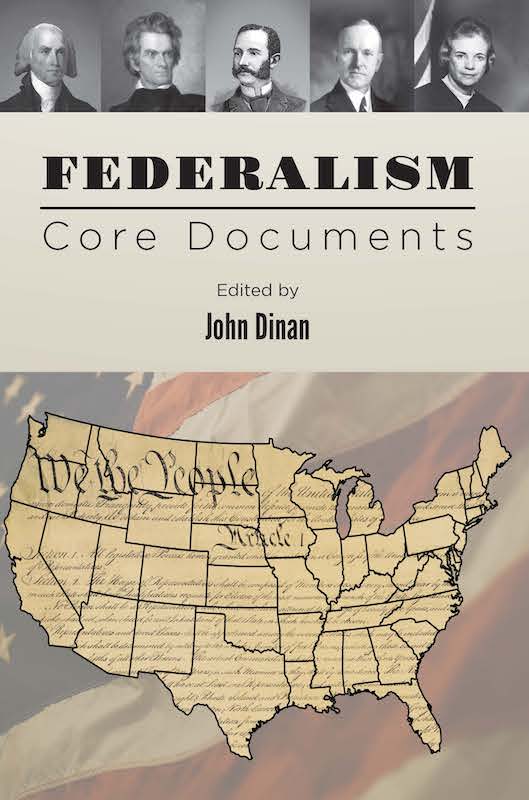
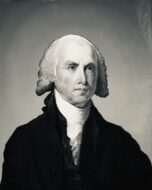
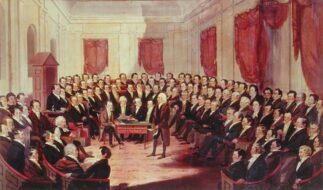
![Finley, A. (1829) Pennsylvania. Philada. [Map] Retrieved from the Library of Congress, https://www.loc.gov/item/98688548/.](/content/uploads/2024/02/Map-of-PA--273x190.jpg)
